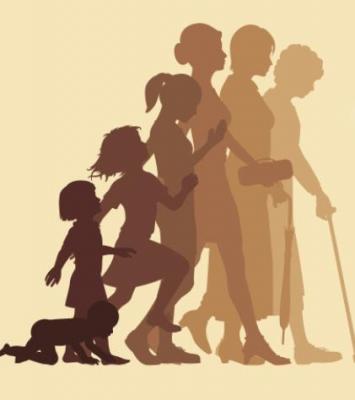Baby, it’s Cold Outside!
According to the Almanac 2022 snowfall in Oklahoma will be near normal, with the best chances for snow in early and late January. When the temperature drops, older adults run a higher risk of health problems and injuries related to the weather, including hypothermia, frostbite, and falls in ice and snow. BE PREPARED. Here are a few precautions everyone should take.
FALLS A CONCERN FOR SENIORS: Ice on walkways, steps and road is just one of many safety hazards that seniors face during the winter months. But it’s a major one. A wrist or ankle fracture can disable you for six weeks or longer; a fractured hip or head trauma can lead to loss of independent living or even death.
Wear low-heeled shoes with good traction and nonskid soles. If you use a cane purchase an ice pick attachment for your cane at a medical supply store. Trekking poles are designed for cold weather walks. One big hazard is getting into and out of cars. Make sure your footing is secure before you step in or out.
If you have a heart condition or thinning bones, it may not be safe for you to shovel snow. In cold weather, your blood vessels tend to constrict more than they otherwise would. And you are always at risk of falling and breaking a bone. It might be wise to pay someone to do your snow removal; or ask someone to help. When steps and walkways have been cleared sprinkle with salt or kitty litter.
STAY WARM: Inside or out, make sure you are protected from the cold. Seniors are particularly vulnerable to hypothermia because of a slowed metabolism. And they are at risk of frost bite because aged skin loses some of its nerve endings and sensitivity.
You may not notice anything until it is too late. Signs of hypothermia include slurred speech, dizziness, confusion, shallow breathing and a slow or irregular heartbeat. You may find yourself less coordinated than usual. If your body temperature falls below 95 degrees Fahr enheit, you need immediate medical help.
Dress in layers; wear warm socks, a heavy coat and warm hat and gloves. Remember that about 60 percent of body heat is lost through the head and neck. When the wind chill factor dips down near 0 degrees Fahrenheit, make sure all exposed skin is covered.
Indoors, keep your thermostat high enough–at least 68 degrees–to be comfortable. Persons with heart conditions tend to get cold faster and may be at increased risk of dehydration, which, in turn, can lead to lightheadedness and falls.
FIRE RISKS: While you are trying to stay warm inside, avoid doing anything risky like using the oven of your cook stove or a kerosene space heater to warm things up. Fireplaces and wood and gas stoves can leak dangerous amounts of carbon monoxide unless they are properly vented and cleaned regularly.
Have a carbon monoxide detector and change the batteries at least once a year. Signs of carbon monoxide poisoning include: a headache, weakness, nausea, dizziness, confusion, blurred vision and, eventually, loss of consciousness.
Many fires are caused by use of space heaters. Keep them well clear of clothing and curtains or electrical wires. Never leave a portable heater unattended. And use them only for short periods to take the chill away from a certain room or area. Don’t use electric blankets if you have damaged nerves. Use an extra blanket or two plus a hot water bottle.
STAY ACTIVE–PHYSICALLY AND SOCIALLY. It’s easy to become isolated as you try to protect yourself from the elements and COVID. Always follow all precautions recommended by the CDC. Being around others is crucial to avoiding depression.
Invite friends over for dinner or an evening playing cards or games. Visit the Ponca City Senior Center for lunch and check out the month’s list of activities. Get involved in church activities or volunteer for the Kay County Retired Senior Volunteer Program, RSVP. Make winter a time for broadening, rather than narrowing, your social support network.
Physical activity is equally important. Don’t neglect your exercise because it’s difficult to get out. A membership at the RecPlex or a health fitness center will allow you an indoors venue for your exercise, whether it’s walking, swimming, riding an exercise bike or using the weight machines. The Ponca City Senior Citizen Center is an excellent place for group exercise and walking.
Bears have it easy. They curl up in a den and spend most of their time sleeping during the winter. You can’t do that. But you can be careful about taking a safe path when you do go out and about.
The Senior Resource Program is located at 445 Fairview, Suite 102, in Ponca City. The telephone number is 580- 382-9099. A direct email is Seniorresourcespc@outlook. com The Senior Resource Program is supported by the Clark Gerontology Fund, RSVP of Kay County, United Way of Ponca City and the Community Health Foundation of Ponca City. There is no charge for any of our services.

